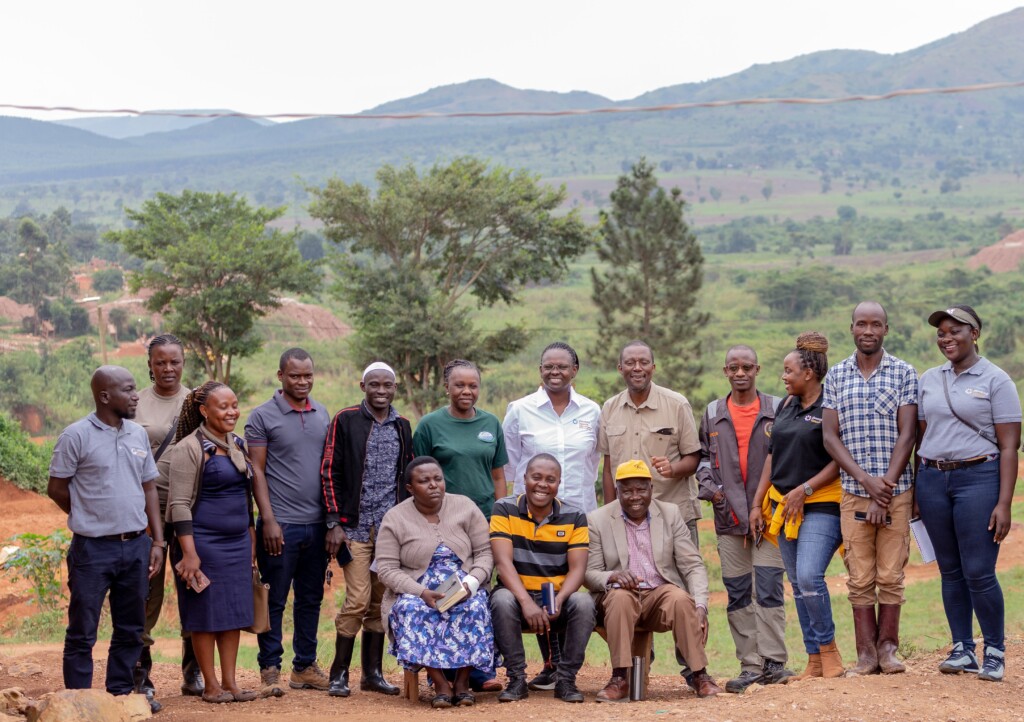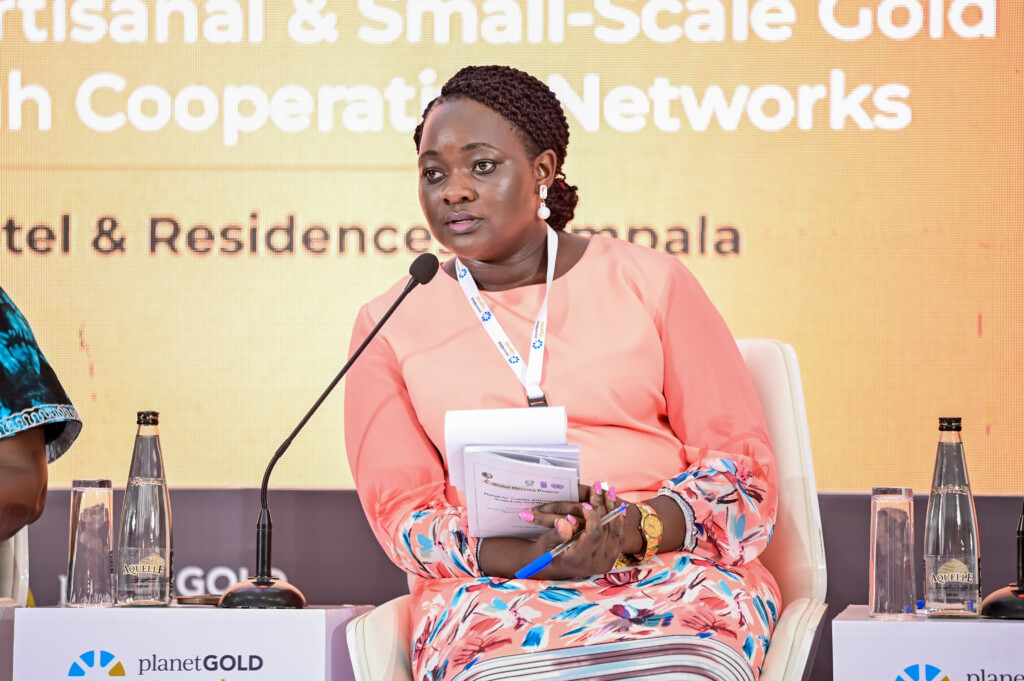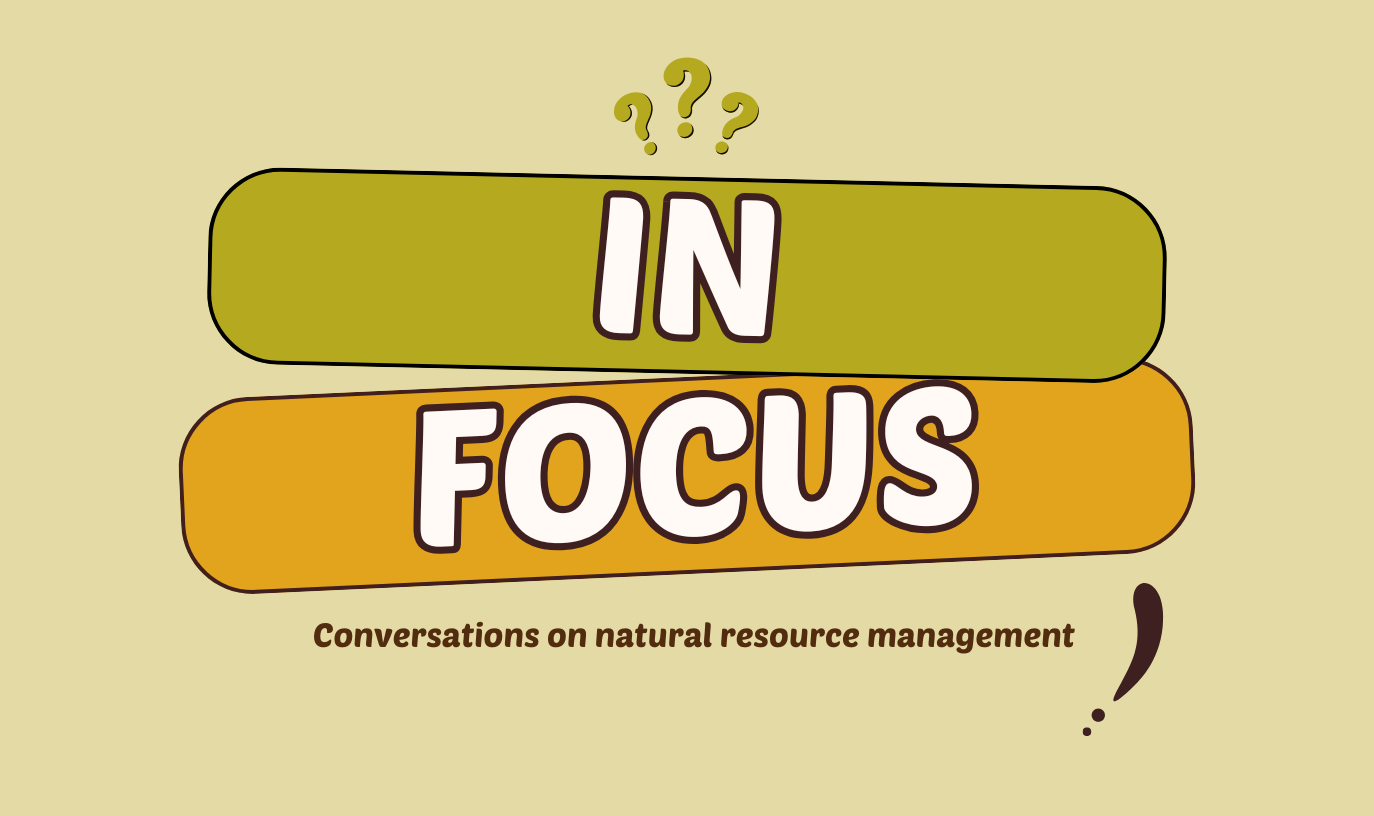Welcome to our In Focus series, where we dive into the key issues shaping responsible mineral supply chains. Through conversations with experts, we unpack the challenges, innovations, and real-world solutions emerging from our work with governments, the private sector, and artisanal miners to support their communities.
This series features stories and insights from IMPACT’s team and partners, touching on our five focus areas: regulatory and legal reform, supply chain transparency, illicit trade, gender equality, and environmental stewardship. Together, we explore how policies can align, stakeholders can collaborate, and equitable practices can take root in the artisanal mining sector.
In this issue, we hear from Rose Nakawuma, IMPACT’s ASGM Association and Cooperative Officer based in Uganda. Rose shares critical insights into the barriers women face in artisanal and small-scale gold mining (ASGM), and how locally driven solutions are unlocking new opportunities for equity, safety, and community empowerment in the sector.
Artisanal mining is often male-dominated. Based on your experience, what structural or cultural factors contribute to women’s under-representation in key roles within the sector? In Uganda, how are women trying to overcome these? What specific interventions have shown promise in addressing them?
Rose: In Uganda, ASM is still largely shaped by entrenched gender norms that define mining as men’s work. In many artisanal mining communities, women are involved in mining but are typically confined to low-paying, labour-intensive roles—such as panning, and crushing ore. Meanwhile, more profitable positions like pit ownership, equipment operation, or mineral trading are overwhelmingly held by men, who are seen as having the necessary strength, skills, or financial backing.
These gendered divisions are reinforced by broader structural barriers. One of the most persistent is the expectation that women carry the bulk of unpaid care—childcare, cooking, and maintaining the household. This limits their time, mobility, and ability to engage consistently in mining, especially in roles that require long hours or work at remote sites. The physical structure of mining work itself often mirrors these social expectations: tasks that involve machinery or physical labour are culturally coded as male, and women are routinely excluded from training in these areas.
Social perceptions make it even harder for women to break into higher-value roles. In some communities, women at mine sites are seen as violating social norms, and harmful beliefs still circulate, such as the idea that women bring bad luck, especially near extraction points. These attitudes create environments where women not only lack access to opportunity but also face active discouragement or stigma when they try to step beyond traditional roles.
Many women in these communities also tend to have limited formal schooling and little exposure to mining-related skills, financial literacy, or safety practices. This puts them at a disadvantage when it comes to negotiating fair deals, managing their work safely, or advancing into leadership positions within mining cooperatives. In addition, in some Ugandan cultures, including among the Baganda in Central Uganda, women face restrictions on land inheritance and ownership. Since access to mineral-rich land is often the gateway to more profitable roles in ASM, these legal and cultural constraints effectively lock many women out of the sector’s economic benefits or force them to rely on male relatives to gain access.

That said, women are not just sitting back—they’re organizing and finding ways to change things. Many have joined and formed mining cooperatives and associations. These platforms allow them to pool resources, support each other, and access finance through savings and credit groups. That collective strength is really important.
We’re also starting to see more targeted programs making a difference. For example, the planetGOLD Uganda program is providing women with hands-on training in mercury-free processing, ore beneficiation, and equipment use. That’s helping women step into more skilled and better-paying roles. There are also legal empowerment interventions helping women formalize, understand, and claim their rights to land and inheritance. And at the policy level, civil society and international organizations are pushing for more gender-inclusive frameworks to support these changes.
While the barriers are real, the momentum is growing. As more women gain access to skills, finance, land, and leadership roles, they’re not just improving their own livelihoods—they’re shifting how entire communities view women’s place in the mining sector.
How have women’s associations been instrumental in promoting gender equity within mining communities? Are there specific metrics or indicators that effectively demonstrate their impact, particularly in areas like leadership representation, inclusivity, income equality, or improved working conditions?
Rose: The impact of women’s associations in Uganda’s ASM sector is not just visible, it’s measurable.
Take leadership and governance, for instance. Of the 17 cooperative societies supported by planetGOLD Uganda and IMPACT, six are currently led by women—three of which are exclusively women-run. Women now make up about 70% of the total membership across these cooperatives. That shift in representation is significant in a sector where women have long been excluded from decision-making.
We’ve also seen a sharp rise in women’s ownership of processing infrastructure. Just a few years ago, only two women-owned ore processing plants. Today, that number has grown to fifteen. These women-led businesses are not only boosting women’s control over production and income—they’re also employing both women and men, expanding economic opportunity within their communities.
Income improvements are another clear indicator. Casual labourers like panners, stone crushers, and ore dryers—most of them women—have seen their average daily earnings increase from UGX 2,000 (USD 0.54) to over UGX 10,000 (USD 2.69). That’s a fivefold jump, driven in large part by collective marketing efforts, better negotiating power, and access to more stable supply chains.
Working conditions have improved as well. Reported cases of gender-based violence at mine sites have dropped, from around two cases per day to just three per month, according to police data. That decline reflects a combination of factors: better site-level governance, increased awareness, and the protective influence of organized women’s groups.
These outcomes didn’t happen on their own. Women’s associations have played a central role in making them possible. They’ve created platforms for women to organize, advocate, and gain access to training, financial services, and legal support. Through collective action, they’ve pushed for more inclusive policies, challenged harmful norms, and built stronger negotiating positions within the gold value chain.
Government recognition is following suit. By forming cooperatives, women create opportunities to access formal support, including from government initiatives. For example, Uganda’s GROW (Generating Growth Opportunities and Productivity for Women Enterprises) project—led by the Ministry of Gender, Labour and Social Development—now includes targeted assistance for women’s mining cooperatives. This includes technical support and access to finance, reinforcing the role these associations play in improving working conditions and strengthening women’s participation in the sector.
What are the key challenges in organizing artisanal miners into effective cooperatives, and how do these challenges vary across different regions or contexts? How do you address issues such as trust-building, leadership development, and capacity-building?
Rose: Supporting trust-building, leadership development, and capacity-building are essentially the most effective ways to overcome the challenges that many groups of artisanal miners face in organizing themselves
These aren’t just technical fixes—they directly respond to the social, cultural, and structural barriers miners face across different regions.
Trust-building is foundational. Many miners are skeptical of cooperatives, often due to past experiences with mismanaged or exploitative initiatives. Others have heard conflicting information or are unsure how cooperatives actually function. From experience, transparency is key—open meetings, inclusive planning, and clear communication help establish credibility early on. Introducing simple accountability measures and creating space for feedback encourages ownership and helps prevent internal conflict. In divided communities, building trust also means ensuring that all voices are heard and that leadership reflects the community’s diversity.
We have witnessed how cooperatives thrive when leaders are not only technically capable but also respected and representative. To achieve this, trainings are focused on participatory governance, financial management, communication, and conflict resolution. Leaders are elected democratically, with term limits and defined responsibilities to reinforce accountability. Real-life problem-solving scenarios are often used to build confidence and decision-making skills—particularly important where formal education may be limited.
Capacity-building strengthens both the association and its members. Training covers financial literacy, safer and more efficient mining practices, environmental responsibility, and business development. Beyond the technical side, exposure visits and engagement with government and private sector actors help miners understand their role in broader systems. This opens up opportunities for policy engagement and formal market access. In many cases, access to these tools shifts how miners view cooperative membership—from a risk to a long-term investment.
These approaches directly respond to on-the-ground realities. For instance, where mobility is high and miners move frequently between sites, flexible membership structures are introduced. In areas where miners lack national IDs—needed for cooperative registration—local partnerships help address documentation gaps. And where traditional power structures resist formal organization, peer mentoring and success stories from similar communities can be powerful tools to shift perceptions.
What gaps remain in existing regulatory frameworks, particularly regarding labour rights, land ownership and access to financing for women miners? How might stakeholders effectively address these gaps through policy innovation or collaborative projects?
While there has been progress on paper, major regulatory gaps still limit women’s full participation. These gaps are especially evident in labour protections, land ownership rights, and access to finance.
In many mining communities, women are treated as casual labourers and therefore excluded from protections under Uganda’s Employment Act. This means they often work without contracts, face wage discrimination, and have no access to benefits like maternity leave or job security. Because they’re not formally recognized, they also fall outside the scope of labour inspections, which makes them more vulnerable to exploitation and unsafe working conditions.
Land ownership is another major barrier. While the 2013 Uganda National Land Policy recognizes women’s rights to own and access land, enforcement is weak, the policy lacks penalties for gender-based discrimination in land allocation or inheritance, and there is limited recourse for women who are denied access. Since mineral-rich land is the foundation for meaningful participation in ASM—whether through pit ownership, investment, or leadership—this gap continues to limit women’s economic agency.
Uganda’s microfinance frameworks also do not account for the specific needs of women in ASM. Most financial institutions view mining as too high-risk, and they require collateral—often land titles—that most women typically don’t have. As a result, women struggle to access capital for equipment, processing facilities, or formal business registration.
Addressing these gaps requires both policy innovation and collaborative solutions across sectors.
On labour rights, there’s a clear need to revise labour laws to reflect the realities of informal work while still extending protections. That could include mechanisms for formalizing casual labour in ASM—such as simplified employment agreements or protections that apply regardless of contract status. Workplace standards must also be expanded to include fair wages, maternity leave, and health and safety provisions.
For land rights, enforcement is key. Stronger legal mechanisms are needed to challenge discriminatory practices and ensure women can claim ownership or inheritance. Mobile legal clinics and community-based legal literacy programs can help women understand and exercise their rights, especially in rural areas where enforcement tends to be weakest.
In terms of finance, stakeholders could pilot gender-responsive financing models, such as low-interest credit schemes backed by government guarantees, or partnerships with SACCOs and microfinance institutions. These programs should be designed specifically for women in ASM and include financial literacy training, flexible collateral requirements, and risk-sharing tools to reduce barriers to entry.
Ultimately, bridging these regulatory gaps requires a two-track approach: top-down policy reform that makes frameworks more inclusive and enforceable, and bottom-up innovation through projects that meet women where they are.
Building trust and fostering collaboration at the community level can be challenging, how do you navigate complex social dynamics to drive initiatives around gender equality, responsible sourcing and community empowerment in mining region.
Driving meaningful change in ASM communities—especially around gender equality and responsible sourcing—starts with trust. And trust is built through respect, patience, and a community-led approach.
Every community has its own social fabric. Rather than imposing external solutions, it is essential to begin by listening and understanding local norms, decision-making processes, and conflict resolution practices. Interventions gain traction when they align with existing systems and values, rather than disrupt them.

Change, especially around gender roles or governance, needs to be introduced gradually. Sudden shifts often provoke resistance. But when conversations are culturally sensitive and framed around shared goals like improved livelihoods or safer working conditions, communities are more open to new ideas.
Understanding power dynamics is critical. Traditional leaders, religious figures, cooperative heads, or even informal influencers all play a role. Engaging them early helps ensure interventions aren’t seen as externally driven. When these leaders are on board, they can explain the purpose of a project in ways that resonate locally, building legitimacy and buy-in. Before any project begins, community leaders need to fully understand the goals. Open communication at this stage prevents misunderstandings and allows leaders to advocate for the project with confidence. Once that foundation is in place, wider community engagement becomes much easier and more effective.
It’s also important to acknowledge that real change takes time. Celebrating small wins—like increased women’s participation in meetings or safer practices at a mine site—keeps momentum going and shows that progress is possible.
Finally, showing genuine respect for what the community values signals that the intervention isn’t there to override local identity, but to build on it. In complex environments, transformation only happens when people feel seen, heard, and involved. By prioritizing local knowledge, sharing power, and staying transparent throughout the process, it’s possible to build lasting trust—and with it, lasting change.

Meet Rose Nakawuma
Rose Nakawuma is IMPACT’s ASGM Cooperatives and Association Officer based in Uganda. She has extensive experience supporting artisanal mining groups in their formalization efforts, with a focus on practical solutions to challenges in the sector. Rose brings strong community engagement skills and a background in conflict resolution. She holds a Bachelor of Laws from Kampala International University and a Diploma in Legal Practice from the Law Development Centre.

